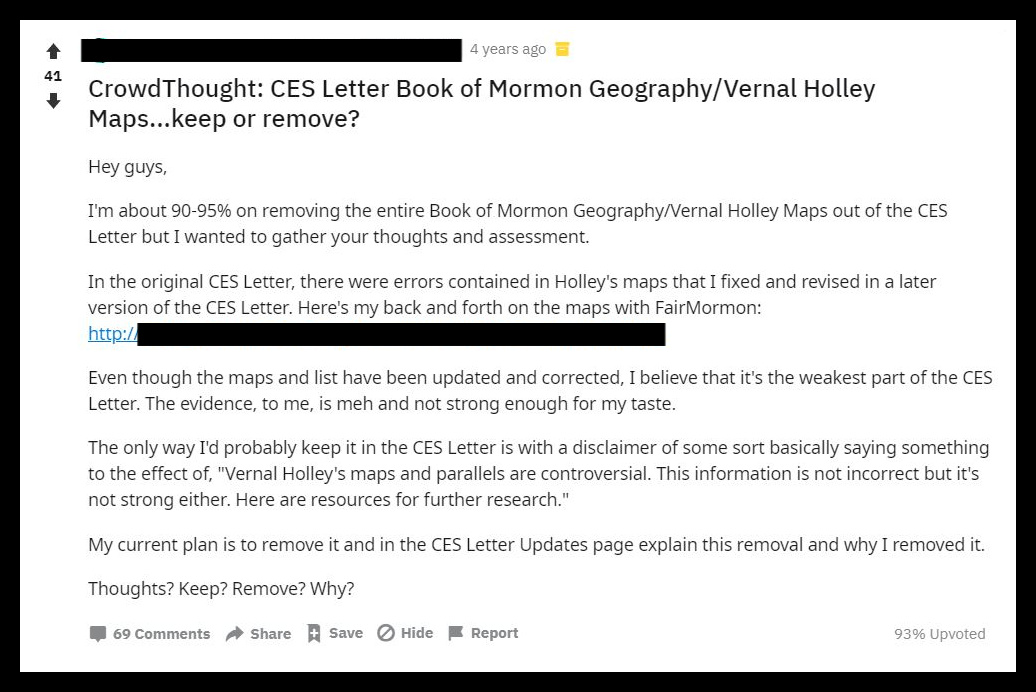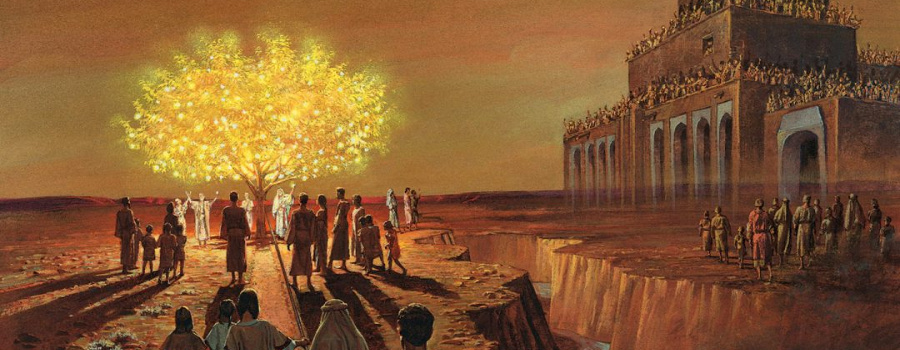
I often hesitate to talk about the CES Letter, because it’s the reason many people leave the Church, and I don’t want to pique anyone’s curiosity. If you haven’t heard of the CES Letter before, all you really need to know is that it’s the most popular anti-Latter-day Saint material of our day. Essentially, the author took every conceivable objection to our faith, and published it in one place.
If you haven’t read it, don’t. It’s not worth your time nor your effort. Its whole design is to be faith-destroying, and for a lot of people, it is. Of course, they deserve love and respect no matter which path they choose. But when it’s dissected, the CES Letter is nothing more than a common “fallacious debate tactic:”
Related: Should Members Read Anti-Mormon Literature?
It’s called the Gish Gallop
It’s a funny name, but I rather like it. To define this term I’m going to quote quite a bit from the term’s RationalWiki page, but be aware that the link contains a bit of strong language. Anyway, here’s the gist:
The Gish Gallop is the fallacious debate tactic of drowning your opponent in a flood of individually-weak arguments in order to prevent rebuttal of the whole argument collection without great effort. The Gish Gallop is a conveyor belt-fed version of the on the spot fallacy, as it’s unreasonable for anyone to have a well-composed answer immediately available to every argument present in the Gallop.
… Although it takes a trivial amount of effort on the Galloper’s part to make each individual point before skipping on to the next (especially if they cite from a pre-concocted list of Gallop arguments), a refutation of the same Gallop may likely take much longer and require significantly more effort (per the basic principle that it’s always easier to make a mess than to clean it back up again).
-RationalWiki
In short, it’s a manipulative doubt bomb. It’s a volley of a thousand arrows, hoping that one hits something. The CES Letter hopes to simply overwhelm your senses with reasons not to believe, with little regard for accuracy or the strength of each argument.
For example
In the first chapter of the CES Letter the author accuses Joseph Smith of fabricating Book of Mormon names based on real geographic place names in his vicinity. Out of almost 90 geographic names in The Book of Mormon, the author claims Joseph got about 20 from his geography. But within those 20, several did not exist when The Book of Mormon was published in 1830. It’s extremely unlikely Joseph would have even known about several others.
Related: CES Letter: Proof or Propaganda?
In short, the argument is extremely weak, and the “galloper” knows it. A few years ago he posted online his intention to remove the argument from the book entirely. In his words,
I’m about 90-95% on removing the entire Book of Mormon Geography/Vernal Holley Maps out of the CES Letter but I wanted to gather your thoughts and assessment … Even though the maps and list have been updated and corrected, I believe that it’s the weakest part of the CES Letter. The evidence, to me, is meh and not strong enough for my taste … My current plan is to remove it and in the CES Letter Updates page explain this removal and why I removed it.
The comments to his post were entertaining. One person called the potential removal a “betrayal” because that issue was the last straw for them before their testimony gave way.
The galloper knows full well that the argument is weak. And yet, it remains to this day in the first chapter of the Letter. If that’s not highly manipulative and intellectually dishonest, I don’t know what is.
The challenge of the Gish Gallop

Refuting a Gish Gallop is hard. Not because it’s a well-formed argument that forces you to reconsider your worldview in a new light, a process taking critical thought over a long span of time. Not at all. It’s hard because there’s so [darn] much to refute. Every claim probably requires at minimum one Google search, a writeup of what was found, and a link to the source. Conversely, making the claim only requires one of those steps: the writeup itself. And if the Gish Gallop itself seems to have some substance, this process becomes much harder: each claim’s evidence must be thoroughly debunked. As such, the debunker must understand both the claim and why it’s [not credible]. The claimaint need only recite the claim.
-RationalWiki
It’s easy to make claims. It’s harder to prove claims wrong. For example, I can make the claim that the sun has a core made out of molten gold. Prove me wrong!
As you might imagine, the reason why that’s wrong may not be that easy to explain and substantiate in one equally as succinct sentence. The same applies to the claims in the CES Letter. If you’re not willing to do the (sometimes intensive) research associated with the claims, then they indeed appear quite threatening.
Related: FREE Book Download, “Bamboozled by the CES Letter,” by Michael R. Ash
But if you take the time to tackle each argument individually, there’s light at the end of the tunnel. Don’t be intimidated by the claims, or the work necessary to understanding the refutation.
The ethics of the CES Letter and other anti-Latter-day Saint content
It’s an interesting exercise to confront anti-Latter-day Saint material and ask yourself in your head, What do they want me to do after I’ve abandoned my faith?
Some entities exist for the sole purpose of destroying your foundation of faith, leaving it in shambles, and not replacing it with anything in particular. But the majority are trying to break down your faith in the hope that you’ll adopt their own viewpoints.
Instead of sharing with you why they believe their beliefs are correct, they opt for attacking your own faith from every angle, hoping something sticks. They try to burn down in minutes that which took years to build. Then, from the ashes resulting from their own act of arson, they generously offer to take you in. I love the way anthropologist Manu Padro (who is not a member of the Church) described these entities. He said, rather graphically,
They are trying to coerce you into a situation where they can bombard you with so many doubt-provoking questions that they can cause your resolve to collapse and your identity to fall apart. Inside of that vacuum, created by an act of psychological rape, they hope to impregnate you with their own belief system.
If that sounds abusive, it’s because that’s what it is. It’s an extension of the cultural legacy of the inquisition. They can’t torture you, but they can humiliate you and pressure you with questions you don’t have an answer to yet. They try to hit you up with too many of these questions to answer, because if they don’t it wouldn’t work. That’s how the CES Letter works. It’s garbage but it’s a common strategy in the anti-Mormon ministry.
-Manu Padro
The CES Letter uses the Gish Gallop technique in order to scare you into a panic. It aims at manipulating you into a dead-sprint away from the gospel, fumbling your faith along the way. Don’t fall for it. Either avoid the trap altogether (I recommend this), or slow down, and do your homework.
The challenge of faith
Ultimately, people of (any) faith are at a disadvantage when detractors demand answers. And while there are plenty of answers in regard to the CES Letter, there are some things of faith that cannot be proven, whether you’re a Latter-day Saint, Catholic, Muslim, or Protestant. If we had all the answers, faith wouldn’t be the first principle of the gospel. People of faith have to learn how to be comfortable with unanswered questions. Fiona and Terryl Givens explained the necessity of doubt very clearly in The God Who Weeps:
The call to faith is a summons to engage the heart, to attune it to resonate in sympathy with principles and values and ideals that we devoutly hope are true and which we have reasonable but not certain grounds for believing to be true. There must be grounds for doubt as well as belief, in order to render the choice more truly a choice, and therefore the more deliberate, and laden with personal vulnerability and investment. An overwhelming preponderance of evidence on either side would make our choice as meaningless as would a loaded gun pointed as our heads. The option to believe must appear on one’s personal horizon like the fruit of paradise, perched precariously between sets of demands held in dynamic tension.
We have access to the restored gospel of Jesus Christ. We have every reason to hold our heads high and proclaim our gospel far and wide to those who seek it. Let us do so ethically, responsibly, and in as Christ-like a way as possible.









